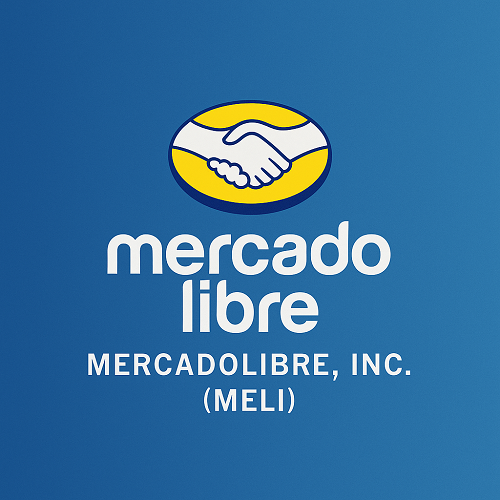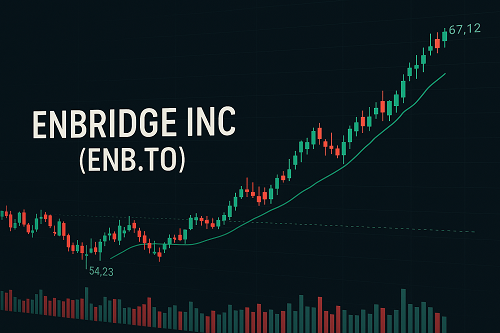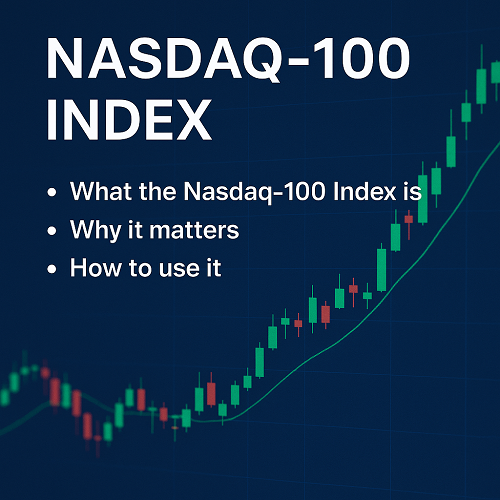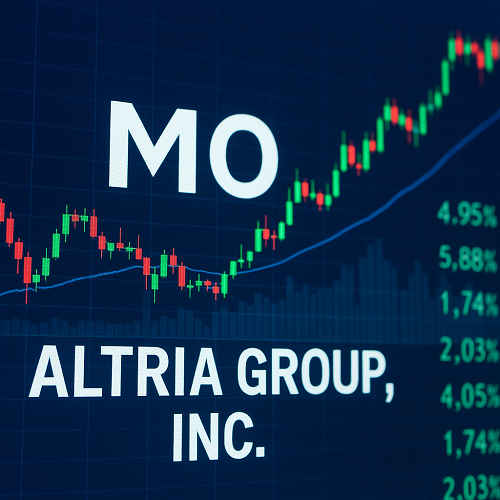MercadoLibre, Inc. (Ticker: MELI) is often dubbed “the Amazon of Latin America.” It is the leading e-commerce and fintech conglomerate in Latin America, operating across multiple verticals including online marketplace, payments (MercadoPago), credit (Mercado Crédito), logistics (Mercado Envios), and advertising. Investors closely follow Mercado Libre stock due to the company’s influence in the region.
- Headquarters: Montevideo, Uruguay (South American reach)
- Exchange listing: NASDAQ (MELI)
- Industry / Sector: Internet Retail / Mixed Retailing
As of the latest data, MELI is one of the largest publicly traded Latin American tech companies by market capitalization. Its growth, regional moat, and diversified business model make it a perennial favorite among growth investors.
Business Model & Growth Drivers
To understand the investment potential of MELI, one must dissect how its multiple business segments interlock and feed into one another to create synergies and network effects.
Core Segments
| Segment | Description | Key Strengths |
|---|---|---|
| E-commerce / Marketplace | The platform where third-party sellers list goods and buyers purchase them | High volume, scale, local seller network |
| Fintech & Payments (MercadoPago) | Digital wallet, payments, merchant services, P2P transfers | Monetizes transaction flow, cross-sell financial services |
| Credit & Lending (Mercado Crédito) | Consumer and merchant credit (loans) based on platform data | Leverages user data, high margins |
| Logistics & Fulfillment (Mercado Envíos) | Warehousing, shipping, last-mile delivery across Latin America | Solves delivery bottlenecks, improves reliability |
| Advertising & Promotional Services | In-platform ad placements, sales promotions, seller tools | High margin, boosts marketplace monetization |
Competitive Moats & Network Effects
- Data flywheel: As more users and sellers join, MELI gains richer insights on demand, pricing, creditworthiness, and logistics optimization.
- Ecosystem lock-in: Sellers who use MercadoPago, Mercado Crédito, and logistics get integration benefits that raise switching costs.
- Geographic focus & regulatory advantage: Deep local presence in Latin America, understanding of compliance, local payments, and cross-border hurdles.
- First mover lead: In many Latin American countries, MELI is either the dominant or among the top players, giving it scale advantages.
Key Growth Drivers (Next 3–5 Years)
- Financial Services expansion: As margins in e-commerce compress due to competition, fintech (credit, payments) can drive higher ROI per active user.
- Logistics infrastructure buildout: Owning more of the supply chain can improve delivery speed, cost, and control (especially in underserved regions).
- Cross-border trade: Allowing sellers in one Latin American country to serve buyers in another region, leveraging scale.
- Monetization of advertising & analytics: Using marketplace data to serve targeted ads and premium seller tools.
- Credit & lending innovation: AI / ML credit underwriting to expand into underbanked populations with favorable risk-adjusted returns.
Financial Performance & Key Metrics
In assessing MELI, we need to look at revenue growth, profitability, margins, returns, capital structure, risks, and cash flow trends.
Revenue & Growth Trajectory
Over the past 5 years, MELI has posted robust topline growth, often in the 30–50%+ annual range. However, high growth also comes with investments and occasional volatility.
Profitability & Margins
- Gross margin: Typically elevated, thanks to scale and marketplace fees.
- Operating margin: Under pressure when investments in logistics, market expansion, and credit losses rise.
- Net margin & Earnings: Highly sensitive to credit loss provisions, foreign exchange volatility, and macroeconomic conditions in Latin America.
From FINVIZ metrics (as of recent): MELI’s operating margin is ~12.30%, profit margin ~8.52%, return on equity (ROE) ~43.8%, return on assets (ROA) ~7.75%.
Capital Structure & Leverage
- Debt/equity: ~2.0 (including long-term obligations)
- Quick ratio: ~1.18 — shows a moderate level of liquidity cushion
High leverage can amplify returns, but it also heightens macro / interest‐rate risks.
Cash Flow & Free Cash Flow
Stable positive free cash flow is crucial, especially in capital-intensive business lines like logistics and credit. Investors should monitor FCF conversion, capex trends, and growth investments.
Recent Quarterly / Annual Highlights & Trends
- Recent quarters have shown strong growth in payment volume and lending business.
- However, credit losses have been volatile (especially in weaker economies), and foreign exchange headwinds (due to Latin America inflation and currency volatility) can erode translated earnings.
- Analyst estimates for coming quarters can be viewed on MarketWatch’s analyst estimates page.
Competitive Landscape & Risks
No investment thesis is complete without assessing headwinds, threats, and uncertainties.
Competitors & Alternatives
- Global / regional marketplaces: Amazon (in LATAM markets), Alibaba, JD.com (international expansion), Mercado Libre’s local peers.
- Fintech challengers: Local banks, challenger digital banks (e.g. Nubank in Brazil), payment startups.
- Logistics / delivery companies: Third-party couriers, local logistics startups, incumbents.
Key Risks & Challenges
- Currency volatility & inflation: Latin American currencies are volatile; translation risk can severely impact reported earnings.
- Credit & default risk: As lending expands into underbanked populations, default rates could surge in downturns.
- Regulatory & political risk: Changes in tax policy, e-commerce regulations, or interest rate policy could impair operations.
- Competition / market share loss: Global entrants or well-capitalized regional firms could erode margins.
- Execution risk in logistics & operations: Building infrastructure in remote regions is expensive and operationally complex.
- Valuation multiples compression: As growth becomes harder, multiples may reset.
Technical & Market Sentiment Analysis
For active traders and momentum investors, technicals and sentiment provide additional guidance.
Price Chart / Technical Structure
- Check daily, weekly, monthly charts to identify trend, support/resistance, moving averages (e.g. 50-day, 200-day).
- Watch key pivot zones, breakout levels, or failure zones.
- Use technical indicators: RSI (overbought/oversold), MACD (trend momentum), volume profiles.
Sentiment, Analyst Ratings & Price Targets
- MELI’s average analyst consensus is often “Buy” or “Outperform” (with occasional downgrades).
- Forward P/E (estimates) and PEG ratio help assess if expectations are factored in.
- Short interest is modest (~1–2%) in recent data (lower downside from forced short squeeze).
- Institutional ownership is high (~80%) suggesting strong institutional confidence.
Relative Strength / Peer Comparisons
Compare MELI’s performance vs. emerging-market tech indices or peer group (e.g. Shopify, Amazon, Sea Ltd, Alibaba) to get relative strength insight.
Forecasts, Valuation & Price Targets
This section synthesizes bottom-up and top-down forecasting, valuation methods, and sets a probabilistic price range.
Forecast Scenarios
| Scenario | Revenue CAGR | Operating Margin | Earnings Growth | Catalyst / Risks |
|---|---|---|---|---|
| Base case | 20–25% | Expand from 10–12% to 13–15% | 25–35% CAGR | Continued fintech growth, moderate FX stability |
| Bull case | 30–35% | 15–18%+ | 40–60% growth | Breakthrough credit scale, dominant logistics |
| Bear case | 10–15% | compression to 8–10% | 0–10% | Credit losses, FX shock, regulatory intervention |
Valuation Approaches
- Discounted Cash Flow (DCF)
Estimate future free cash flows over 5–10 years, discount at WACC (adjusted for emerging market risk), and derive terminal value (e.g. via perpetual growth or exit multiple). - Multiples / Comps
Use forward P/E, EV/EBITDA, P/S multiples drawn from peers, adjusting for growth differentials and earnings quality. - Sum-of-the-parts (SOTP)
Value e-commerce, fintech, logistics, credit separately and sum them (with discount for cross-segment interdependencies).
Price Target Ranges (Hypothetical)
- Base case: $2,500–$3,200
- Bull case: $3,500–$4,000+
- Bear case: $1,800–$2,200
These reflect growth expectations, margin expansion, and risk-adjusted discount. (Note: actual targets may differ based on real-time inputs, interest rates, macro conditions.)
Trading Strategies & Risk Management
Here we translate the investment thesis into actionable trading ideas and risk controls.
Long-Term Investment Strategy
- Use dollar-cost averaging to mitigate volatility.
- Consider allocating a core position (e.g. 3–8% of equity allocation) as a thematic Latin America / fintech growth play.
- Rebalance or trim on large surges (e.g. 20–30%+ move) to lock in gains.
Short-Term / Swing Trading Strategies
- Trade breakouts from chart resistance (e.g. above consolidation zones).
- Use pullbacks to moving averages or Fibonacci retracements for entry.
- Combine with momentum indicators (MACD cross, RSI oversold bounce).
- Set stop-losses (e.g. 5–10% below entry for high volatility stock).
Hedging & Risk Controls
- Use options to hedge (e.g. protective puts).
- Diversify with non-correlated assets.
- Monitor macro risk signals (currency, interest rates, emerging market indicators).
- Cap exposure given MELI’s emerging market sensitivity.
Frequently Asked Questions (FAQs)
Q1: Is MELI a good long-term buy?
Yes — for investors who believe in Latin American digital growth, fintech adoption, and logistic modernization. But it’s volatile and exposed to macro and FX risks.
Q2: How does currency risk affect MELI?
Earnings from Latin America are denominated in local currencies. When translated into USD, currency devaluation can erode profits even if business is strong.
Q3: What metrics should I watch moving forward?
Payment volume growth, credit loss rate, free cash flow, operating margin expansion, logistics scale, user growth, and FX impact.
Q4: How does MELI compare to Amazon or Shopify?
Amazon is broader and global with huge scale; Shopify is primarily software tools for merchants. MELI uniquely combines marketplace, payments, credit, logistics in Latin America—more vertically integrated and regionally focused.
Q5: Could MELI issue dividends?
Unlikely in near term. Growth companies prefer reinvesting free cash flow rather than paying dividends.
Conclusion
MercadoLibre (MELI) stands as a compelling exposure to Latin America’s digital economy, combining e-commerce, fintech, credit, and logistics into a cohesive ecosystem. While growth and synergies are real, the company carries risks tied to emerging market volatility, currency fluctuations, and execution challenges.
For investors and traders willing to stomach volatility, MELI offers upside; for those seeking stability, it should be a carefully sized position. Always pair conviction with risk controls.





 XAUT-USD
XAUT-USD  AMD
AMD  MARA
MARA  SHOP
SHOP  BULL
BULL  CL=F
CL=F